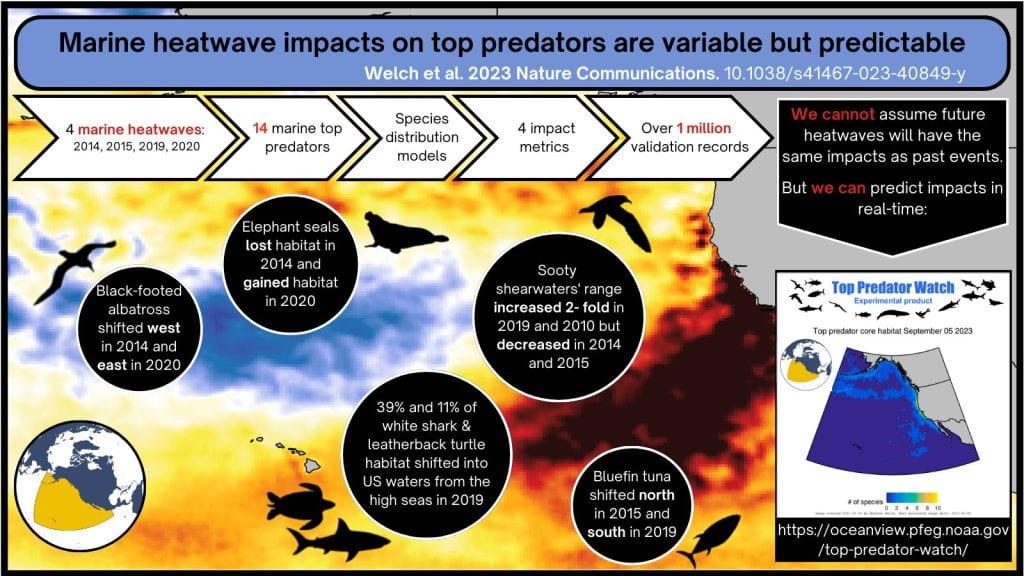Heather Welch’s new paper in Nature Communications highlights the difficult road ahead in terms of managing for marine heatwave impacts on top predator species. Another new paper by Alexa Fredston found marine heatwaves were not a dominant driver of demersal fish biomass which begs the question, why not?

For more migratory top predator species, marine heatwaves were not predicted to result in the same response in a given species such as white sharks, but at the same time each species had a different predicted response to a marine heatwave. The good news is that we have models that can help us predict how a species will respond to a given heatwave, from Top Predator Watch in real-time, and the Marine Heatwave Forecast tool for a forward looking approach towards understanding ocean conditions.
Maybe the story is lost when you look in aggregate but instead we need to look heatwave by heatwave and species by species to better understand ecosystem impacts of marine heatwaves. Forecasts and predictions can be helpful in planning, but more nimble-ness or adaptiveness will be necessary as well when changes are predicted or observed.
H. Welch, M.S. Savoca, S. Brodie, M.G. Jacox, B.A. Muhling, T.A. Clay, M. Cimino, S.R. Benson, B.A. Block, M.G. Conners, D.P. Costa, F.D. Jordan, A.W. Leising, C.S. Mikles, D.M. Palacios, S.A. Shaffer, L.H. Thorne, J.T. Watson, S.J. Bograd, and E.L. Hazen, 2023. Impacts of marine heatwaves on top predator distributions are variable but predictable. Nature Communications 14: 5188. DOI: 10.1038/s41467-023-40849-y. PDF
Abstract: Marine heatwaves cause widespread environmental, biological, and socioeconomic impacts, placing them at the forefront of 21st-century management challenges. However, heatwaves vary in intensity and evolution, and a paucity of information on how this variability impacts marine species limits our ability to proactively manage for these extreme events. Here, we model the effects of four recent heatwaves (2014, 2015, 2019, 2020) in the Northeastern Pacific on the distributions of 14 top predator species of ecological, cultural, and commercial importance. Predicted responses were highly variable across species and heatwaves, ranging from near total loss of habitat to a two-fold increase. Heatwaves rapidly altered political bio-geographies, with up to 10% of predicted habitat across all species shifting jurisdictions during individual heatwaves. The variability in predicted responses across species and heatwaves portends the need for novel management solutions that can rapidly respond to extreme climate events. As proof-of-concept, we developed an operational dynamic ocean management tool that predicts predator distributions and responses to extreme conditions in near real-time.
